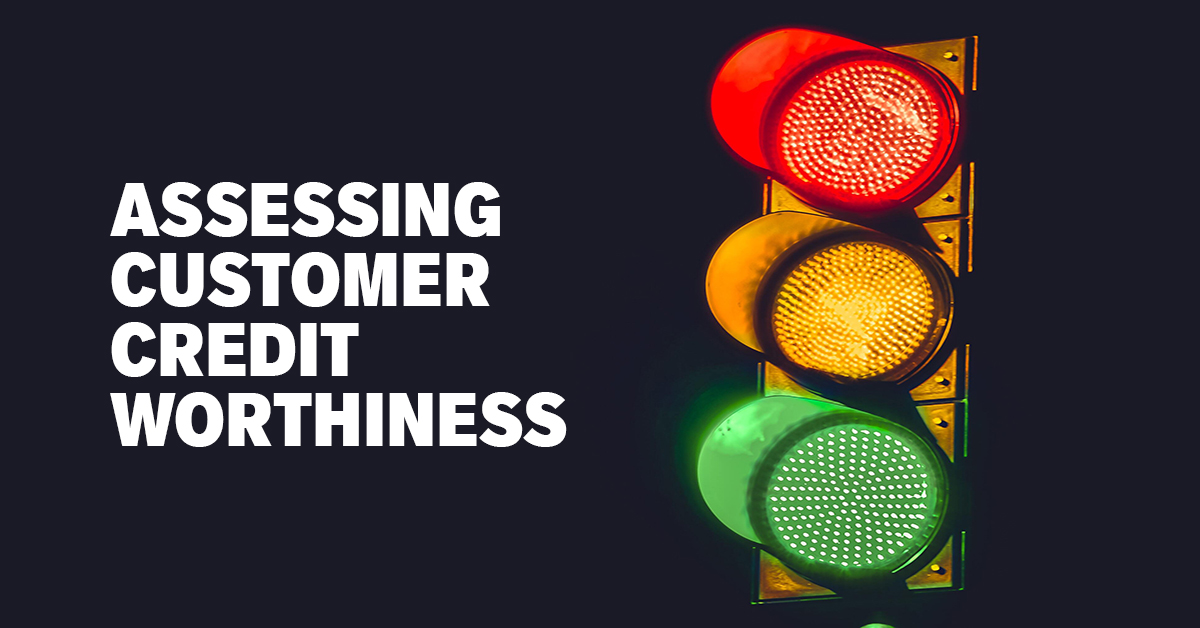Credit risk analysis is essential to determining if a customer is at risk of defaulting on payments. Carrying too many high-risk customers, or even just a few significant-transaction customers who are a potential default risk, can be very detrimental to your business. Any time you invoice clients after providing goods or services, you expose your business to late payment risks which can disrupt cash flow.
Effective credit risk analysis allows you to determine customer creditworthiness and reduce your financial risk. Conversely, overly conservative risk decisions can cost your company in the form of opportunity costs should you hold down credit to a good-paying customer who would be willing to buy more. Striking the right balance is critical to maximizing your company's bottom line.
Constantly improving your credit risk analysis techniques to look at the full picture of a customer or a potential customer – using behavioral snapshots from their recent past as well as regular updates on their ongoing financial activities – is key to detecting warning signs early and saving yourself from a potential loss.
What is Credit Risk Analysis?
Credit risk analysis is the means of assessing the probability that a customer will default on a payment before you extend trade credit. To determine the creditworthiness of a customer, you need to understand their reputation for paying on time and their capacity to continue to do so.
When it comes to analyzing the credit risk of a new customer, smart businesses use a series of strategies to uncover the full picture of customer creditworthiness. That means first assessing the financial performance of a client using big data-driven tools that quickly capture trade data.
Running a business credit report, which illustrates a customer’s ability to pay invoices based on payment history and public records, is also an important next step. Requesting trade references from the customer’s bank and other lenders, as well as businesses or suppliers that already extend trade credit to that customer, is also good practice.
While these practices can help you mitigate risk, it’s important to note that potential clients are likely to provide companies they pay on time as references and omit companies with which they have a less-than-perfect payment record.
Companies like credit insurers that specialize in payment risk can remove this uncertainty since they have unique visibility over millions of buyer relationships and covered transactions, not just a select few. Calculating a client’s debt-to-income ratio shows you what portion the company’s debts make up of its earnings, and the lower the number, the higher their creditworthiness. Finally, when assessing an international client, it is important to review any country-specific credit risks, which can be affected by fluctuations in currency exchange rates, economic or political instability, the potential for trade sanctions or embargo, and other issues.
3 Ways to Take Credit Risk Analysis to the Next Level
Improving your credit risk management process will improve your business’s financial stability. Taking your credit risk analysis to the next level will deliver a greater degree of insight to understand if a customer is struggling even if they are currently paying you on time.
Being aware of these potential risks can help you prevent the repercussions of a sudden and significant nonpayment. Key to improving your credit risk analysis is having access to experts who understand local and international markets and their risks, who can help you identify signs of trouble or potential disruptions early.
Here are three ways to improve your credit risk analysis:
Refine Credit Scoring Techniques
While credit scoring helps paint an important picture of a customer’s creditworthiness based on their financial history, it does not tell you much about their probability of default. Those with low credit scores may be at a higher risk for nonpayment, based on their history of default or other financial issues, but a good credit score does not necessarily mean a customer is a low risk.
Even with a stellar credit history, any business or individual faced with significant or unexpected economic hardships is at risk of default. That’s why refining your credit-scoring technique is an important part of enhancing your credit risk analysis.
Consider including the following criteria when determining creditworthiness of a customer:
- A customer’s most up-to-date financial activities, as well as their cash flow status
- External factors like economic activity and stability in the customer’s specific market and geographic area, interest rates and the economic performance of closely related industries
- Market, industry and performance trend analysis
Incorporate Trend Analysis into your Process
Trend analysis is an important component in credit risk analysis. Instead of looking at a client’s past creditworthiness, dig deeper to understand their future potential as a credit risk. Good credit risk analysis techniques include understanding these trends:
- The client’s business performance: Is it stable, improving or declining, especially as compared to industry competitors’ performance trends
- The market environment: Is it improving or declining?
- National and global economic trends: Which trends are pertinent to the client’s industry?
- Monitoring trends in a client’s debt-to-income ratio: How does their current ratio compare to those of previous years?
Embrace New Technology and Tools
When it comes to keeping track of all of these variables that contribute to a customer’s creditworthiness and risk, employing the right technology is critical.
Customer relationship management (CRM) tools can offer quick visibility into transactional histories and trends with current customers, as certain changes in transactional frequency and behavior may point to increasing risk.
Machine learning can enhance your credit risk modeling capabilities, allowing for the automatic detection of potential risks based on computerized algorithms and large datasets. This technology compares your customer’s specific credit profile to the profiles of many others to determine probable risk.
Integrating machine learning and artificial intelligence into your customer management and credit risk management processes allows for continuous monitoring of customers’ transactional relationships with you and overall financial health, as well as worrisome internal and external trends that indicate rising credit risk.
At Euler Hermes, clients have access to important, robust technology-driven data that helps sharpen credit risk analysis. This data helps customers avoid bad debts and safely expand sales to new and existing customers.
















